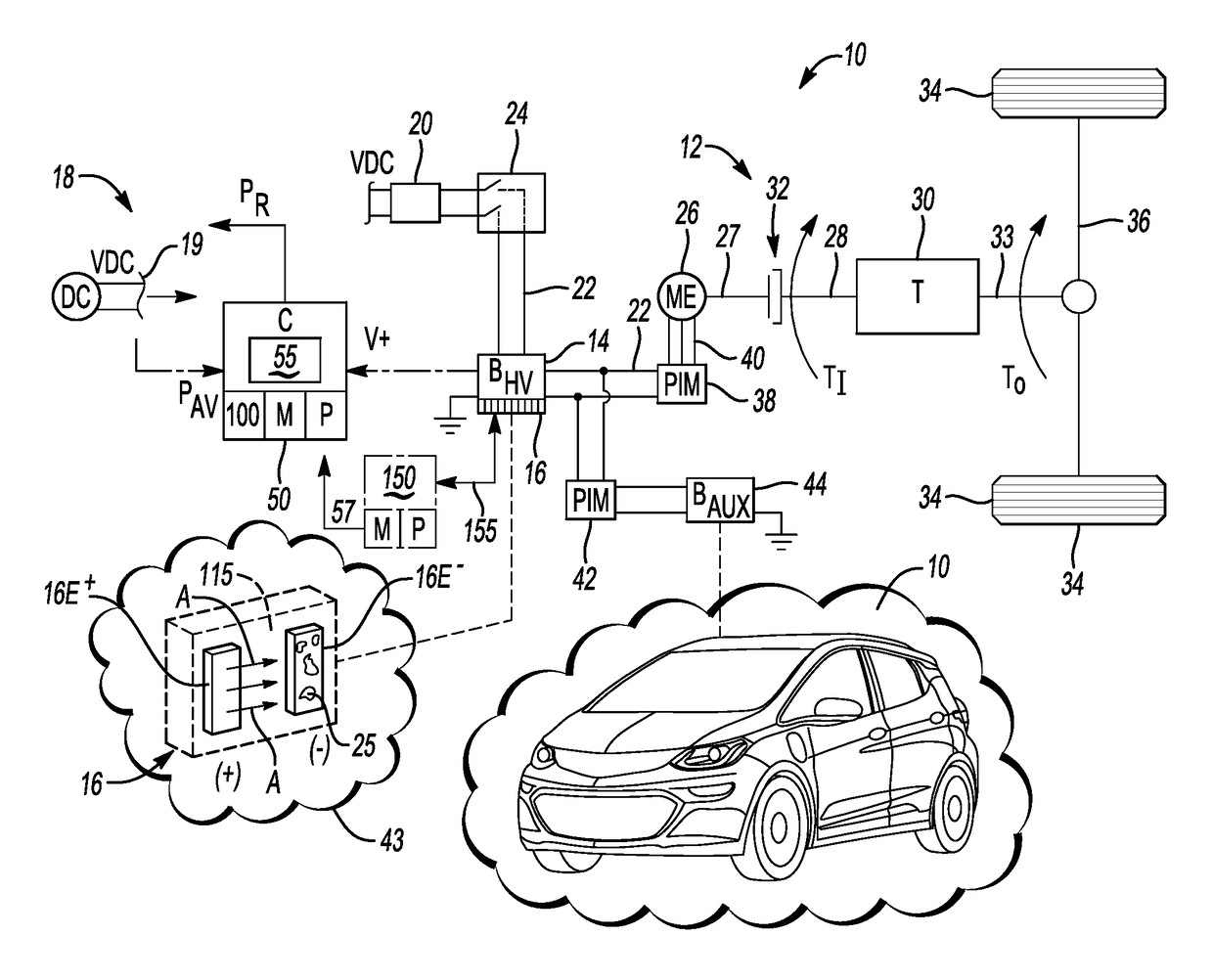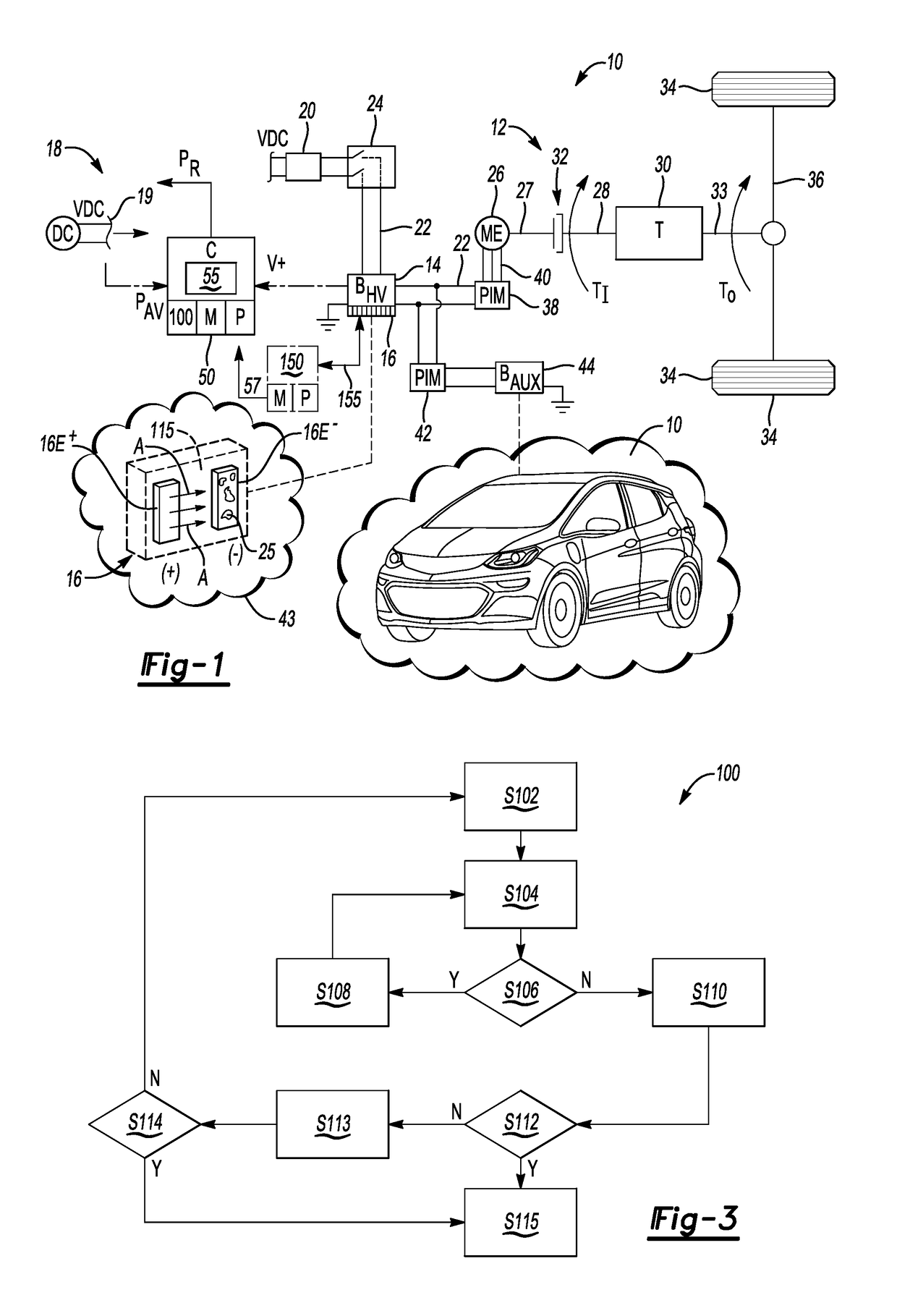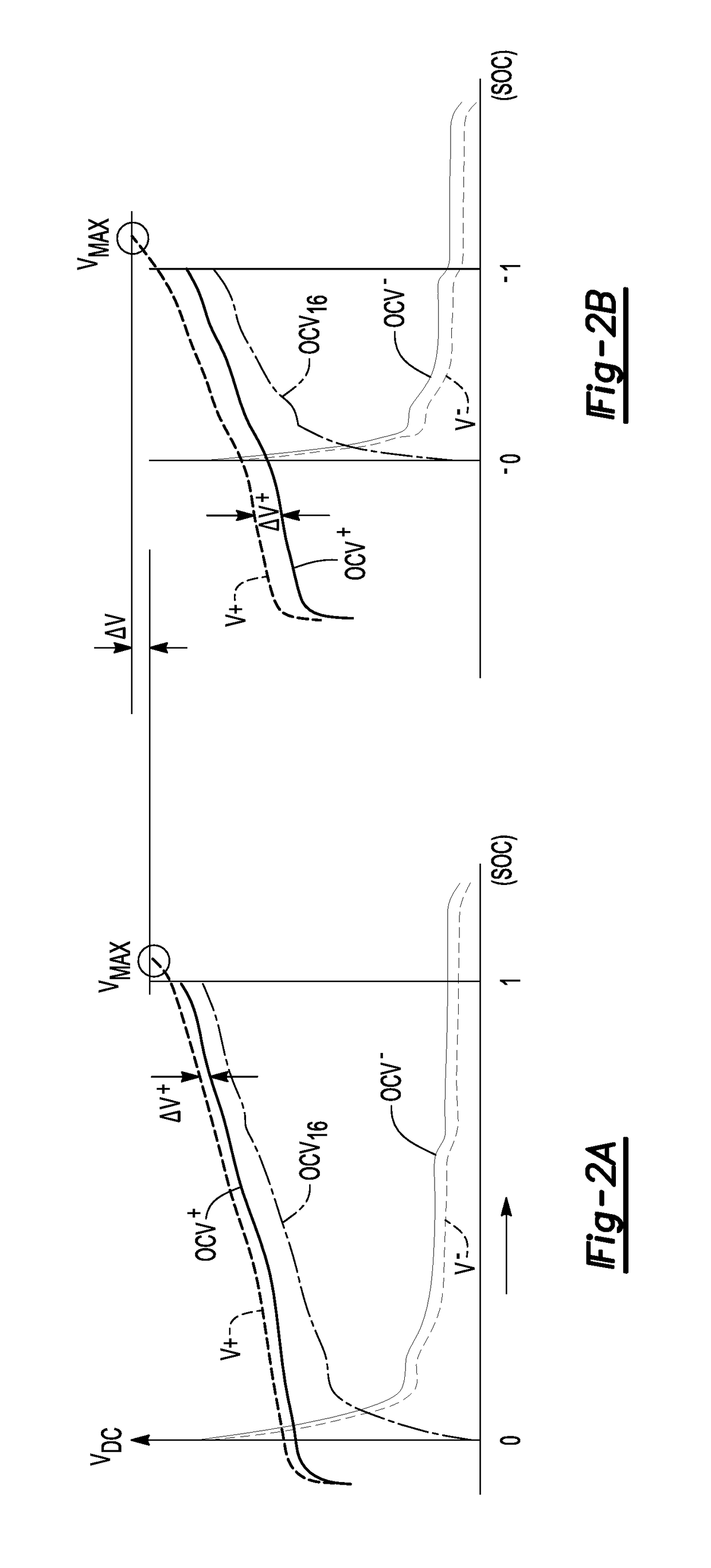Avoidance of electrode plating in a battery cell
a battery cell and electrode technology, applied in secondary cells, battery cell servicing/maintenance, dynamo-electric converter control, etc., can solve the problem that the relative high voltage level of the positive electrode may contribute to the long-term capacity loss achieve the effect of reducing the negative electrode impedance of the battery cell, reducing the risk of lithium plating, and reducing the risk of re-positioning
- Summary
- Abstract
- Description
- Claims
- Application Information
AI Technical Summary
Benefits of technology
Problems solved by technology
Method used
Image
Examples
Embodiment Construction
[0016]Referring to the drawings, wherein like reference numbers refer to like components, FIG. 1 depicts an example system in the form of a vehicle 10 having an electric powertrain 12. The electric powertrain 12 includes a rechargeable high-voltage direct current (DC) battery pack (BHV) 14 having a plurality of battery cells 16. The battery pack 14 may be embodied as a lithium-ion or other lithium-based battery pack, e.g., with each battery cell 16 being a lithium-based battery cell. The present disclosure pertains to methods and systems for avoiding occurrence of localized lithium plating 25 of a negative electrode 16E− of the battery cell 16 as set forth below with reference to FIGS. 1-3.
[0017]With respect to the non-limiting example application as an energy source within the vehicle 10 of FIG. 1, the battery pack 14 may be recharged via an offboard DC charging station 18, e.g., a DC fast-charging station, such as by using a modified J1771 SAE charging plug 19 and a DC charge coup...
PUM
| Property | Measurement | Unit |
|---|---|---|
| distances | aaaaa | aaaaa |
| distances | aaaaa | aaaaa |
| distances | aaaaa | aaaaa |
Abstract
Description
Claims
Application Information
 Login to View More
Login to View More - R&D
- Intellectual Property
- Life Sciences
- Materials
- Tech Scout
- Unparalleled Data Quality
- Higher Quality Content
- 60% Fewer Hallucinations
Browse by: Latest US Patents, China's latest patents, Technical Efficacy Thesaurus, Application Domain, Technology Topic, Popular Technical Reports.
© 2025 PatSnap. All rights reserved.Legal|Privacy policy|Modern Slavery Act Transparency Statement|Sitemap|About US| Contact US: help@patsnap.com



